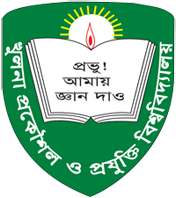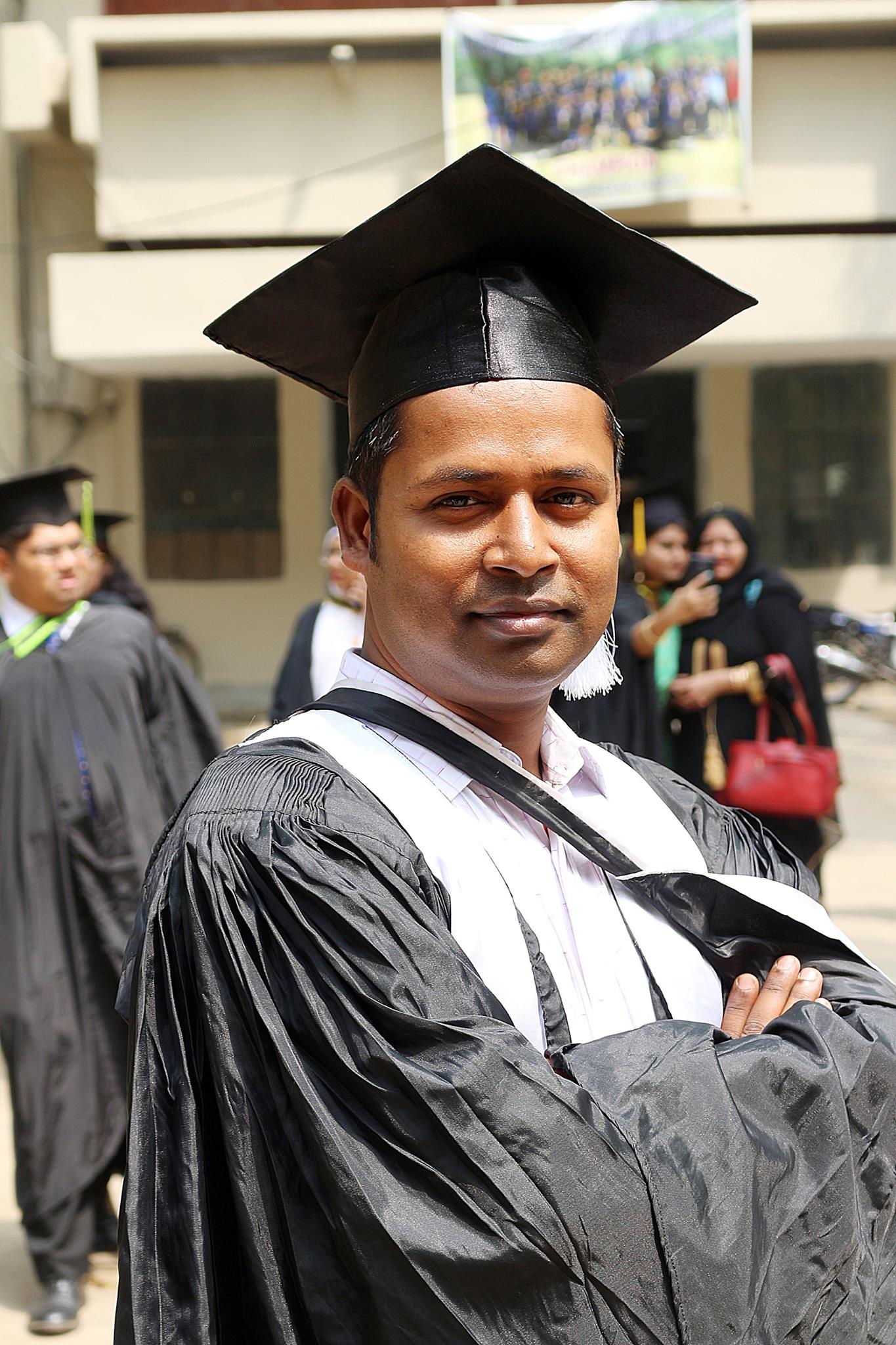Course Conduction
URP 2281: GIS and Remote Sensing (Theory and Practical)
Meaning of GIS and its application in planning. Essential elements GIS. Data structures: raster data structures, vector data structures. Data acquisition: existing data sets, developing new data sets, data entry. Data management. Data manipulation, analysis, Modeling and 3D GIS. Remote sensing and image analysis: Basic Concepts, satellite and sensors, aerial photogrammetry, application of aerial photogrammetry, processing of remotely sensed digital data. Integrate of remote sensing with GIS. Applications of GIS in planning.
URP 4141: Environmental Planning and Management (Theory and Practical)
Theories of natural systems. Importance of environmental planning. The environmental impacts of human actions. The environmental planning procedures: Defining planning area, inventory of environmental resources, assessment of environmental impacts-impact identification, impact measurement and impact evaluation. Mitigation of environmental impacts, impact prevention measures, impact management measures. Case studies in environmental management.
URP 4243: Hazards and Disaster Management
Definition and meaning of hazards and disaster, types of hazards, assessment of hazards, vulnerability analysis, risk assessment, traditional and new disaster threats, basic characteristics of common disasters. Disaster Management Cycle, Response: definition and some relevant aspects, general disaster management factors, special evacuation factors, problems related with effective response. Recovery: definition, problem areas of recovery, major requirements of effective recovery, human factors in recovery, resources relevant to recovery programmes. Prevention: definition, problem areas of prevention, approach and resources required for prevention. Mitigation: definition, guiding principles of mitigation, problem areas, major requirements of mitigation, major mitigation components (structural and non- structural), resource relevant to mitigation. Preparedness: definition, problem areas of preparedness, preparedness needs, funding, warning aspects, and precautionary, measures prior to disaster impact and relevant resources. Disaster Management Plans: need for counter disaster plans, general considerations, format of a plan, critical areas, aspects for consideration. Disaster and National Development: impact of disaster on national development, disaster management policy and national development. Disasters of Bangladesh: types, impacts and mitigation measures. People’s Perception and Response to Disaster. Institutional Framework for Disaster Management in Bangladesh.
URP 2113: Site and Area Planning (Theory and Practical)
Introduction to site and area planning; types of site development. Site selection and analysis: natural factors, cultural factors, and aesthete factors; land use and circulation; site drainage, grading and earthworm alignment of horizontal and vertical curves. Site layouts and development for residential, institutional, industrial, shopping and other types of development. Subdivision planning, landscape and plantation. Key concepts in recreation planning. Recreation needs and resources. Functions and classification of open space, parks, and recreation areas. Analyses of demand, supply and use pattern. Parks and open space standards-approaches to developing standards. Selection of sites. The recreation space master plan and its components. Implementation strategies.
URP 1281: Surveying and Cartography (Theory and Practical)
Definition and Scope of Engineering Survey: definition, scope, importance and its uses. Different types of engineering survey: reconnaissance survey; plane table survey; traverse survey; leveling and contouring; route surveying; land surveying. Area and volume calculation. Cartographic surveying; introductions to photogrammetry; remote sensing and global positioning system. Types of maps; types of maps commonly used in Bangladesh. Uses of scales and scale conversion. Elements of Map: scale, communication objectives, subject matter and function. Mapping techniques: physical models, photomaps, sketch maps, cartograms. Map analysis and map interpretation. The coordinate system and map scale. Relative and absolute position methods/Map Projections: Local grids, Geographical grids, Lambert’s methods, Universal Transverse Mercator Grid, Land partitioning systems. Map projection techniques: planar, cylindrical, conical, etc. Terms and words related with land surveying in Bangladesh (CS, RS, Mouza, Sheet, Dag No, alluvion and dilluvion land etc.)
URP 4272: Participatory Planning Studio
Local level planning and its importance. Contexts of local level planning. Approaches to local level planning. Guidelines for local level planning. People’s participation in planning-meaning and types of participation. Approaches to participation-organizational and functional. Problems of participation. Group projects involving application of participatory approach to planning for the preparation of local level plans.
Supervision
An Objective Analysis of Walkability Assessment: A Case Study of Khulna City Corporation Area, Bangladesh
Sourav Bhadra (1017019)
A.K.M Tanbin Sazid (1017026)
Objectives:
• To find out the level of neighborhood walkability on the basis of urban built environment
Planning An Optimal Road Network By Considering Settlement Hierarchy & Road IRI Value: A Case Study on Phultala Union, Phultala, Bangladesh
Md. Al-Arman Khan (1017029)
Md. Kamrul Hasan Sarkar (1017037)
Objectives:
• To review the current rural road network development strategies conducted by LGED
• To Identify settlement hierarchy and provide optimal road network solution
Discrete Mode Choice Behavior Modelling for Working And Educational Purposes Through Multinomial Logistic Regression by SPSS: A Case Study on Khulna City, Bangladesh
Abir Biswas (1017036)
Md. Anisur Rahman (1017058)
Objectives:
• Creating a multinomial logistic model representing the existing mode choice behavior of Boyra
• Validating the model with respect to the existing situation
• To determine the lack or surplus in the flow of modes to satisfy demand
Investigating Climate Change Induced Waterlogging and Drainage Capacity for Khulna City
Showmitra Kumar Sarkar (1117046)
Md. Atikur Rahman
Objectives:
• To delineate the catchment area and estimate the amount of water in each catchment area by considering the climate change issues.
• To investigate the drainage capacity and identify the impacts of flooding water on infrastructure and life line in the study area.
Assessment and Prediction of Soil Salinity & Land Use Land Cover Change: A Case Study of Batiaghata Upazila, Khulna
Mehedee Hassan (1117041)
Naimul Islam (1117035)
Objectives:
• To develop remote sensing based salinity detection technique.
• Assessment of previous soil salinity trends and Prediction of soil salinity after a certain time.
• Identification of the impacts of soil salinity on land use and prediction of the future possible changes in land use.
Estimation of Areas with High Erosion Risk and Analysis of Socio-Economic Vulnerability: A case study of Padma River Basin, Bangladesh
Muhammad Mamunur Rashid (1117051)
Md. Rony Hussain (1117053)
Objectives:
• To identify the location and amount of land is taken away per year due to river erosion and to delineate amount of land reclaimed per year
• To delineate the possible erosion risk zone in terms of high, moderate and less erosion risk zone.
• To identify the social vulnerability and coping mechanism toward river erosion.
Land-use Land-cover Change (LULCC) Modelling and the impact on Livelihood due to LULCC: A case study of coastal upazillas of Koyra and Sarankhola
Sukanto Das (1117054)
Md. Ashikuzzaman (1117043)
Objectives:
• To detect the Land-use Land-cover Changes (LULCC) using GIS and Remote sensing techniques and also investigate their impact on livelihood of coastal people.
• To predict the Land-use Land-cover Change (LULCC) in near future and also reckon the impact on livelihood in respective time period.
Impacts of Salinity in Drinking Water on Human Health: A Case Study of Mongla Upazila
Tandra Bagchi (1117011)
Antara Sarkar (1217040)
Objectives:
• To investigate the present salinity condition in drinking water of Mongla Upazila.
• To identify public health impacts due to salinity and to determine vulnerable areas and groups.
A Feasibility Assessment of the Mayur River and its Connected Canals as Fresh Water Reservoirs in Khulna City
M. Mashroor Zaman (1217008)
Sanzida Rahman Setu (1217019)
Objectives:
• To estimate annual rainfall for specific catchment area
• To quantify the existing and required reservoir capacity
• To make an economic valuation of the cost and benefit of the project
• To assess project’s feasibility
Water Balancing through Precipitation Modeling and Crops Water Requirement Analysis
MD. Mohaiminul Islam (1217010)
Md. Zabir Hossain (1217020)
Objectives:
• To develop a precipitation model to calculate groundwater recharge of the study area.
• To find out the water requirement for various types of crops in various seasons of the year.
• To find out the gap between groundwater abstraction and recharge and providing policy for minimizing the pressure on groundwater for crops cultivation.
Assessment of Vulnerability to Cyclones and Storm Surges in Coastal Region of Bangladesh: A Case Study on Ward No. 2, 5 and 9, Sutarkhali Union, Dacope, Khulna
S.M. Redwan Kabir (1217015)
Syed Arman Akib Rahman (1217047)
Objectives:
• To investigate the present scenario of coastal natural disasters
• To assess coastal vulnerability to Cyclones, storm surge based on selected five parameters and identify the vulnerable elements (i.e. population, roads, household structures etc.)
• To recommend some adaptation measures focusing particularly on the vulnerable group to increase their resilience against disaster events
Development of Strategic Mobile Application Module for Vulnerable People in Hazard Zones
Abhishekh Barua (1317020)
Objectives:
• To develop a mobile app that will locate the vulnerable people in hazard zones as well as provide effective & strategic information on disaster mitigation & management process.
Potential Heat and Cool Islands Determination through Temperature Modeling: A Case Study of KDA Area
Sazzad Hossain (1317058)
Shamim Islam (1317060)
Objectives:
• Extraction land surface temperature of study area.
• Establish Correlation of LST with temperature reduction factor.
• Forecast of LST to Determine Hot and cool location in Study area.
Impact of Land Use and Land Cover Change on Coastal Livelihood: A Case Study of Kamarkhola Union, Dacope Upazilla, Khulna
Suddah Ahmed (1217053)
Sharfuddin Ahmed (1317010)
Objectives:
• To investigate land-use and land-cover change pattern in coastal areas over the last 17 years.
• To evaluate the consequences of land-use and land-cover change on coastal livelihood.
• To identify socio-economic vulnerability and coping mechanism of the people in coastal region.
Future Challenges for Urban Services through LUCIS Modeling: A Case Study of KDA Planning Area
Safat-ul-arab (1317055)
Md. Nabil shad (1317053)
Objectives:
• To investigate the existing land use scenario of the study area.
• To predict the future land use pattern using LUCIS model
• To find out future challenges for urban services.

